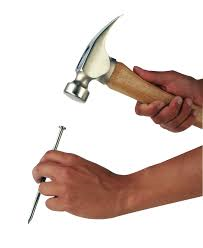In our last blog post I talked about how important it is to have the right tools to embark and complete the journey of a job search. In this blog post I will talk about how important it is to have a road maps as well in this modern day process.
People will often become overwhelmed with all of the options that they have in modern job searching, particularly if they are looking on the Internet. Where should they start? Indeed.com? Monster.com? What about individual company or agency websites?
This is where the rule of 5+5+5 comes in. Take a minute to stop and think -- what the five greatest organizations or companies that you dream of working for? Make a list of those five, and title them the Most Desired List. Now take a closer look -- are there any that don’t realistically deserve a coveted spot on your Most Desired List? For example -- if you would love to work for Google, but don’t really see yourself leaving the area and moving to California, then take them off the list. These five should be your dream locations but they should be reasonably attainable as well. Even though you don’t have to write down why they are on your Most Desired List, you should be able to articulate that.
The second list that you will create is the top five Job Websites. These are the aggregated websites like Indeed, Monster or Idealist, if you are in the nonprofit industry. You may see many of the same jobs across these different platforms because employers may list a position on multiple sites. However, it is important to know five really well and be sure to be able to navigate them. These are the five where you should fully complete the profile and list your resume, cover letter, and interests. In addition, brainstorm five to 10 “job titles” that you will regularly search for. Not sure what I mean? In nonprofits we often hire as entry level a position called “Intake Worker.” Some agencies might call it an “Intake Specialist,” and some may call it an “Intake Assistant” or “Intake Associate.” Another common entry level position in nonprofit has to do with Outreach. This may be titled as “Outreach worker,” “Outreach Specialist,” or “Outreach Assistant,” or even “Outreach Coordinator.” It is sometimes helpful to poke around an organization or company’s website to see what are common titles they may currently be using.
The third list you will create is the top five Stable Employment Locations. These are the pillars of employment in your community -- the utility companies (natural gas, electric, water company, cable company, etc.), the hospitals, the colleges, universities, school systems, municipal governments, county, state and federal governments. You need to pick only five that you would take a job with if it were offered tomorrow, and put them on your list. Be sure to keep it relevant to the type of career that you are looking for -- if you are a nurse, there may be limited opportunities at a utility company, but many more at a school district, hospital or county nursing home.
Once you have your 15 top search locations, write them down or better yet type them into a document that you can open again and again. Also be sure to put in your brainstormed list of potential job titles. Now, do your research. Most of these companies or agencies will have job opportunities listed, even though they may be under the heading “Career,” “Employment Opportunities,” or “Jobs.” However they are listed, but sure to copy that URL or web address and paste it under or next to the location in your working document. At the very least, bookmark it. These are important sites to have. Being able to click on a link and go right to the job listings will save you time and energy -- and if you search them every day, Monday through Friday, you will also be learning a lot of vital information about the company and their pattern to posting jobs.
We often say that finding a job should be treated like having a job. What does that mean? That in order to get a job, you should treat your job search like a job in itself -- decide on your working hours, breaks and what days you will be working, and then follow those guidelines. At a minimum, these sites should be checked 3-5 times per week. With a total of 15 sites to look at, that will break down to a minimum of 3 per day. Some successful job seekers look at all of their top 15 sites daily.
When job searching, remember the rule of 5+5+5 -- Top 5 Most Desired Locations to Work, Top 5 Job Websites and Top 5 Stable Employment Locations. Not to mention a list of 5-10 job titles you regularly seek.




